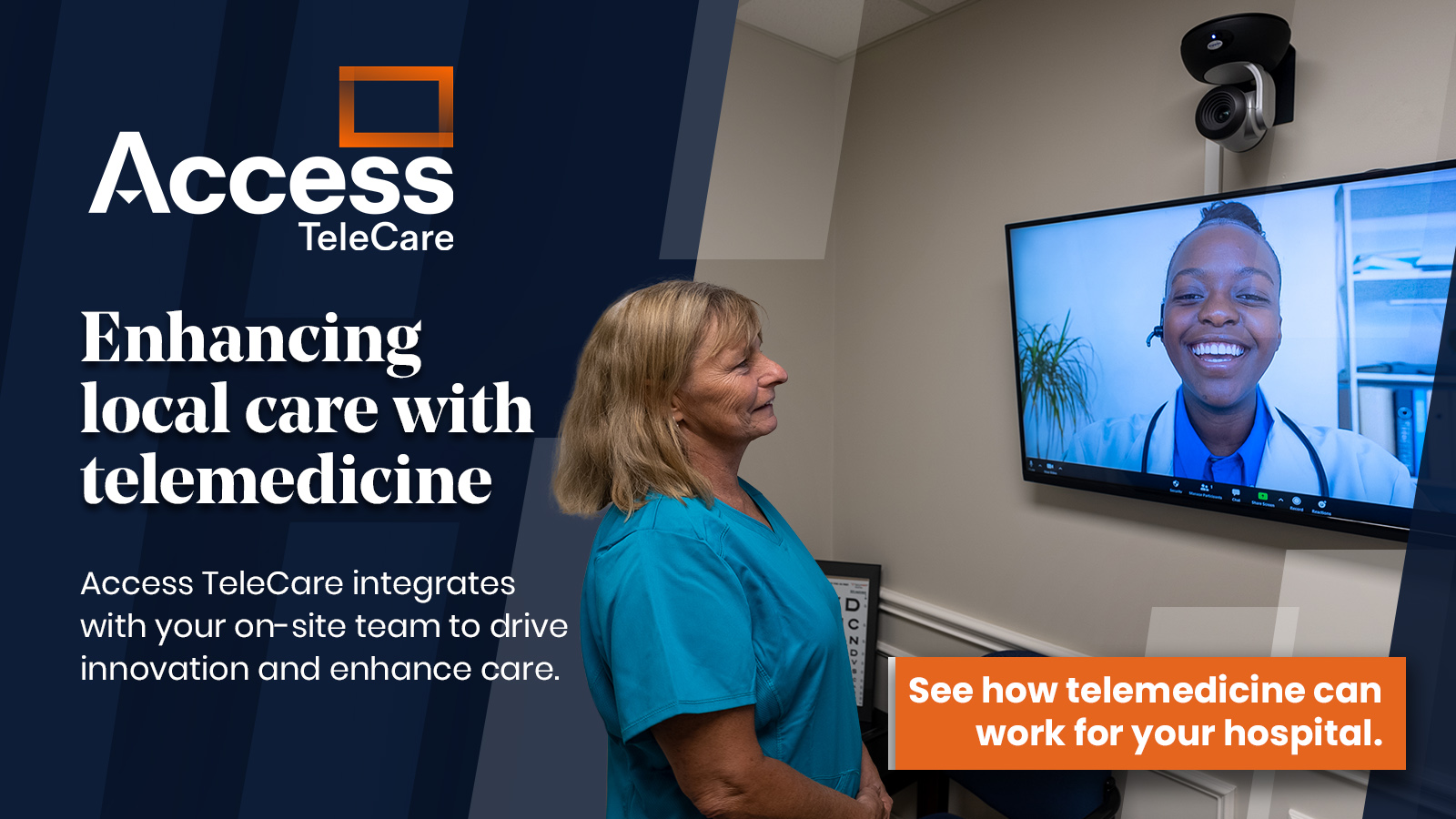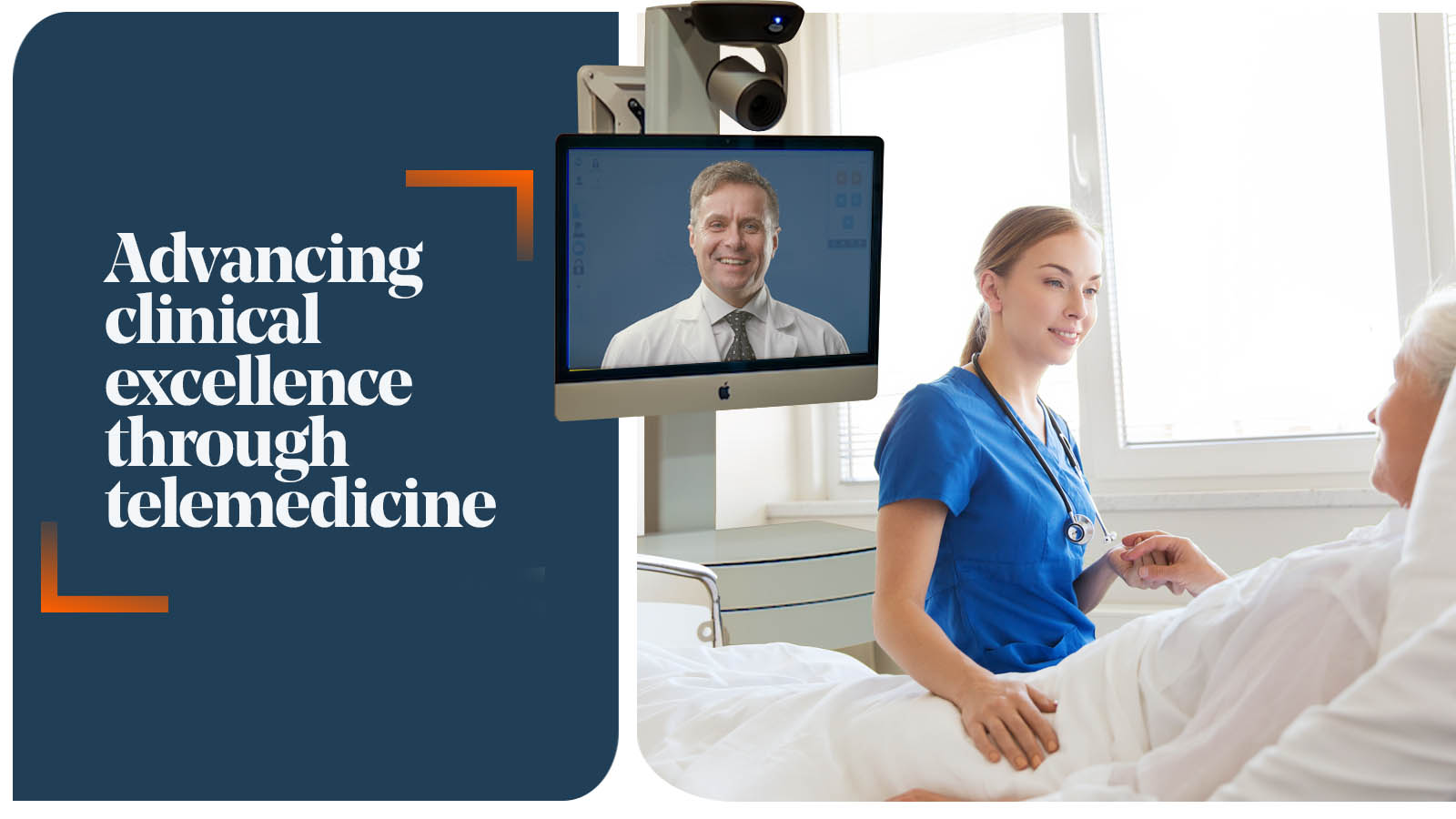What is eICU?
An Electronic Intensive Care Unit is a care model that uses telemedicine to provide 24/7 critical care services for patients with complex, high acuity conditions, without the need for an on-site physician. The term eICU, also known as teleICU, is the diagnosis and treatment of hospital patients in need of the most critical care by remote intensivists using technology like videoconferencing. It makes it possible for hospitals to have access to critical care specialists in the ICU, Emergency Room, or Med/Surg floors and be connected face-to-face in minutes. Similar to emergency department physicians and hospitalists, intensivists are an integral component of acute care telemedicine.
How does eICU work?
The difference between eICU and a typical ICU workflow is that the critical care physician is remote. Like other hospital ICU physicians, teleIntensivists (also known as teleCritical Care physicians) begin each shift by rounding with the patient care team and discussing each patient, classifying them by acuity:
- Patients with acute needs that have potential issues and challenges
- Patients that can be downgraded or transferred out of the ICU
- Patients in the “grey area” where the trajectory of the illness is less clear
- Patients identified with potential problems or increased acuity due to their diagnoses and progressing illness can be escalated for a full in-depth evaluation by the teleIntensivist and on-site care teams. The goal is to proactively assess and treat patients before decompensating occurs.
When an emergency occurs in the ICU, the patient care team can request a consult (similar to paging a doctor who may be elsewhere in the hospital.) TeleCritical Care physicians can run codes, talk the care team through procedures, as well as speak directly to patients and/or their families to help with difficult care decisions.
More From Access TeleCare
See how teleCritical Care makes a difference for patients with the power of Access TeleCare and telemedicine.
Benefits of eICU
- Access to the board-certified US-trained intensivists to assist with clinically complex patients anywhere in the hospital
- Earlier interventions for critically ill patients
- Increased awareness of high acuity patients for proactive monitoring
- Improved care quality and compliance with core metrics
- Protocol-driven best practices of care
- Support for ED staff with difficult admit vs transfer decisions
- More timely discharges from the ICU unit
- Decreased ventilator days
- Can help hospitals achieve and maintain The Leapfrog Group’s quality and safety standards.
eICU is not just used in the ICU
There are multiple use cases in hospitals for eICU.
- In the emergency room, remote critical care physicians can “beam in” to consult with the emergency department onsite staff to determine whether the patient should be moved to the ICU.
- In the ICU, a teleIntensivist can provide expertise to onsite staff regarding care plans for critically ill patients.
- Telemedicine can be used with admitted patients who become more critically-ill, as well as those who have complications from surgery.
Conclusion
Hospitals who need to treat their most critical patients, but lack Intensivists, use eICU as a cost-effective way to gain access to critical care specialists. With a shortage of intensivists nationwide, eICU, or teleICU, allows hospitals to provide access to these highly-trained specialists to their most critically-ill patients













